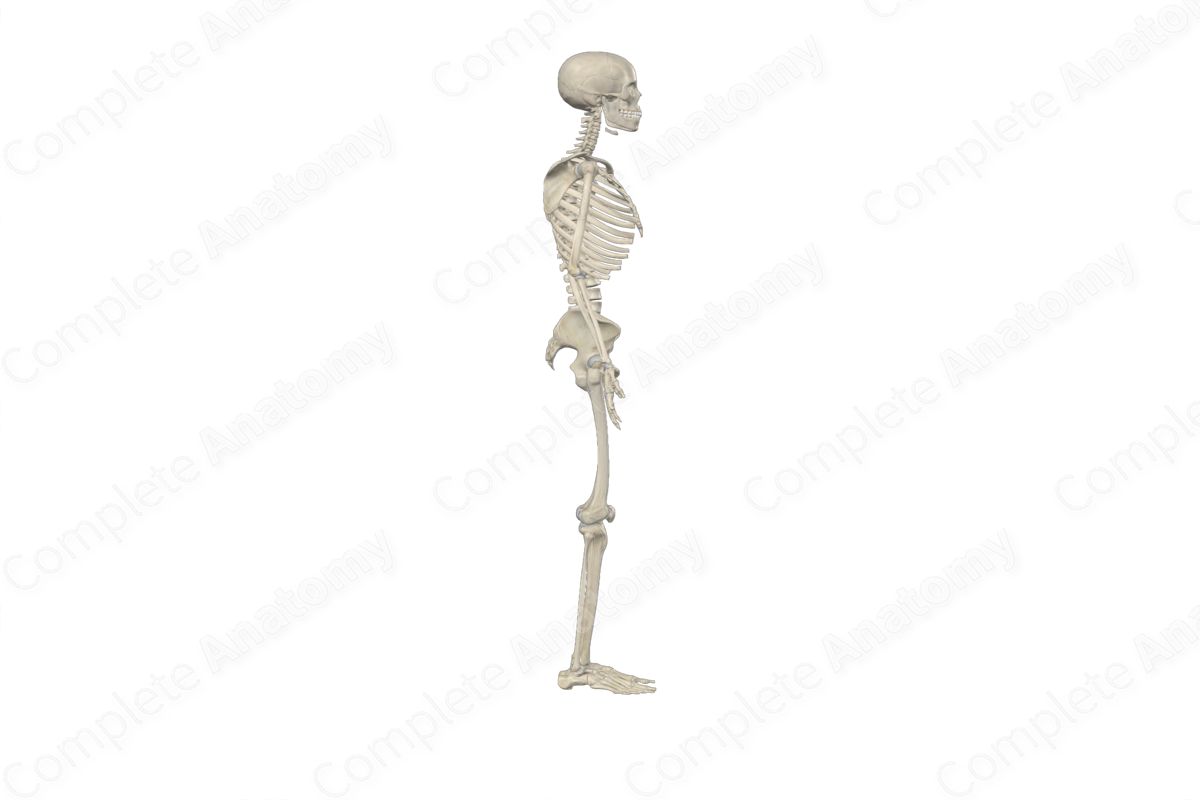
Structure & Function
The skeletal system is mostly composed of bone, a connective tissue that is living, dynamic, and highly specialized. Bones are highly variable in their size and proportion due to a range of developmental and environmental factors, such as sexual dimorphism, ethnicity, and natural individual variation.
The skeletal system has numerous functions, including:
- providing structural support to the body;
- providing attachment sites for muscles and ligaments;
- protecting and supporting tissues and organs;
- storing minerals, particularly calcium, in the body;
- containing bone marrow, which is the site of blood cell production.
Related parts of the anatomy
Types of Bones
At the gross anatomical level, there are two types of bone:
- compact bone (cortical bone), which is solid and dense in appearance and mainly found in the walls of the shafts of long bones and the external surfaces of all bones;
- spongy bone (cancellous or trabecular bone), which has a spongy or honeycomb-like appearance and is mainly found in vertebral bodies, short bones, and the ends of long bones.
Groups of Bones
Depending on their shape, the bones of the skeleton are categorized into five separate groups:
- long bones (tubular bones), which have an elongated, tubular shaft and two expanded ends (e.g., femur, humerus);
- short bones, which can be of any shape but usually have similar proportions in length and width (e.g., carpal and tarsal bones);
- flat bones (tabular bones), which have a flat, or slightly cupped appearance (e.g., scapula, parietal bones);
- sesamoid bones, which are round and found embedded in tendons and joint capsules (e.g., patella);
- irregular bones, which are those that do not belong to any of the other groups and are nonuniform in shape (e.g., vertebrae, mandible).
For classification purposes, the bones of the skeletal system are divided into two parts:
- the axial skeleton;
- the appendicular skeleton.
Overall, all the bones of the human body have defining features which differentiate them from each other. These bony features can be characterized in terms of parts, surfaces, and landmarks.
Learn more about this topic from other Elsevier products
Introduction to the skeletal system: Video, Causes, & Meaning

Introduction to the skeletal system: Symptoms, Causes, Videos & Quizzes | Learn Fast for Better Retention!
Skeletal System

The skeletal system is comprised of closely connected but functionally distinct tissues such as bones, cartilages and tendons that connect the former two with muscles.




